#aegidius sadeler ii
Text

Aegidius Sadeler II - Rest on the Flight into Egypt,
3 notes
·
View notes
Photo


Aegidius Sadeler after Jan Brueghel the Elder - Rocky Landscape with St. Jerome
39 notes
·
View notes
Photo


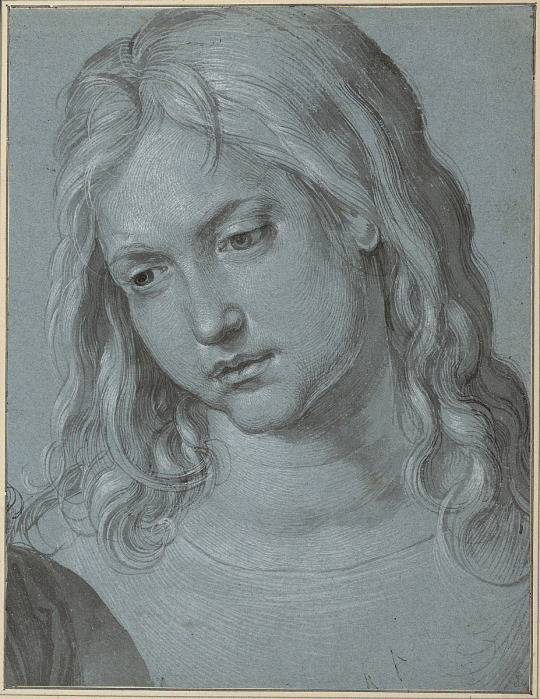
Aegidius Sadeler II, after Albrecht Dürer
Head of Christ
Vienna, The Albertina
(engraving, 358 x 227 mm)
Hans Hoffmann, after Albrecht Dürer
Head of Christ, ca. 1580
Budapest, Museum of Fine Arts
(brush, black ink, heightened with white on greenish prepared paper, 261 × 104 mm)
Albrecht Dürer
Head of Christ (Christ Among the Doctors), 1506
Vienna, The Albertina
(grey and black brush, grey wash, heightened with white on blue paper, 273 x 210 mm)
sources:
The Albertina, http://sammlungenonline.albertina.at/?query=Inventarnummer=[DG76617]&showtype=record#d49be3b5-afed-4391-a484-13da9e44332a
Szepmuveszeti, https://www.mfab.hu/artworks/the-head-of-the-twelve-year-old-christ/
The Albertina, http://sammlungenonline.albertina.at/Default.aspx#22f99f85-7b5b-42fe-87b5-94c41721110b
#Albrecht Dürer#Hans Hoffmann#Aegidius Sadeler II#After Dürer#copy#comparison#Dürer Renaissance#German#german art#Flemish artist#Rudolf II#engraving#drawing#blue prepared paper#religious#head of christ#Vienna#Budapest#museum of fine arts#Albertina#Austrian collections#Hungarian collections#art#art history#Dürer monogram#flemish printmaking#flemish art
27 notes
·
View notes
Photo

Aegidius Sadeler II (after Albrecht Dürer), Head of an Apostle with Beard and Cap, 1597
#aegidius sadeler II#albrecht dürer#print#drawing#engraving#apostle#portraiture#art#grupa o.k.#national gallery of victoria
35 notes
·
View notes
Photo
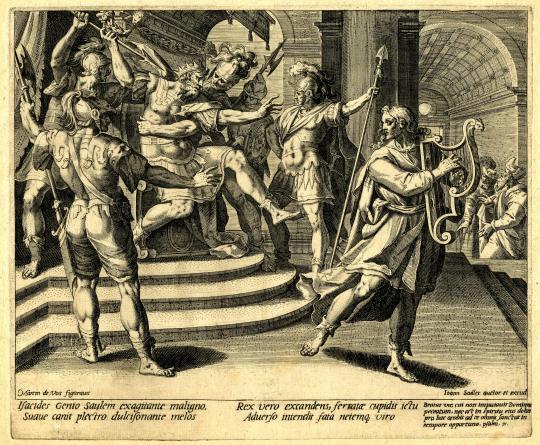
Aegidius Sadeler II, after Maarten de Vos - The story of Saul and David, 1580-90.
0 notes
Photo

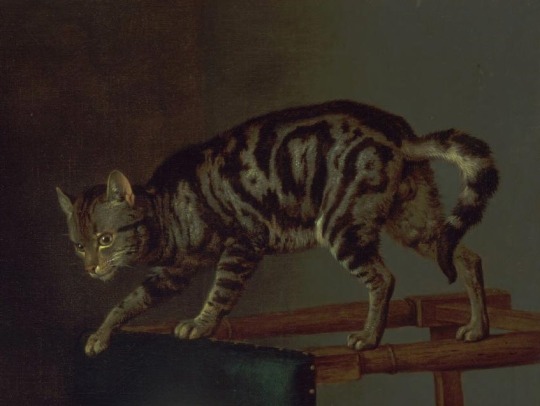
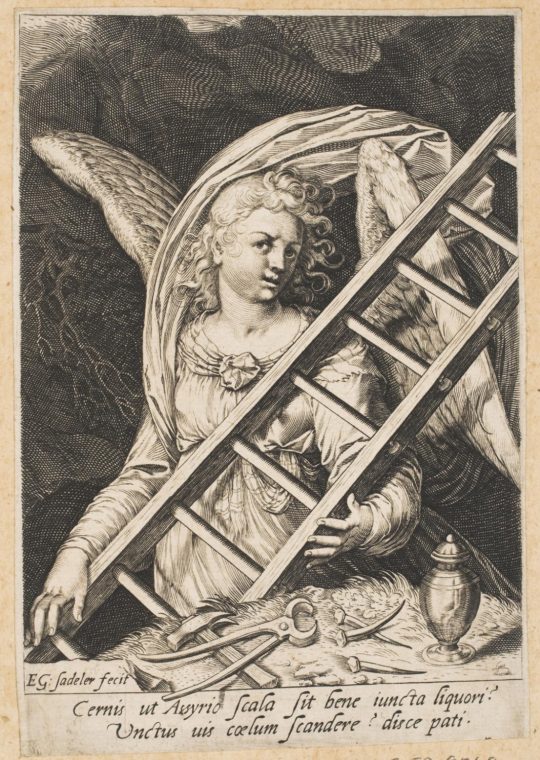

Today is Friday The 13th—often considered the unluckiest day on the calendar—and this year there are two. Unless you happen to be a triskaidekaphobe (one who fears the number thirteen), take a look at some of our artworks that remind us of this unlucky day:
"The Unforeseen Misfortune (The Broken Mirror)," c. 1779, by Robert de Launay
"Cat Playing with Two Dogs" (detail), 1652, Paulus Potter
"Angel with the Ladder, Tools, Nails and Ointment Jar," c. 1599, Aegidius Sadeler II
"Nikki Bennosuke with Umbrella, from the series Beauty and Valor in the Novel Suikoden (Biyū suikoden)," 1866, Tsukioka Yoshitoshi
#Friday The 13th#black cat#broken mirror#umbrella#walk under ladder#ladder#art#art museum#museum#art history#history#painting#print#cat#Tsukioka Yoshitoshi#Aegidius Sadeler II#Color woodcut#Japan#Japanese art#Angel with the Ladder Tools Nails and Ointment Jar#Engraving#Paulus Potter#Robert de Launay#Philadelphia Museum of Art#Philadelphia art museum#Philadelphia#Philly art museum#Philly#staff pick
106 notes
·
View notes
Text

Summer
Aegidius Sadeler after Pieter Stevens II
0 notes
Photo
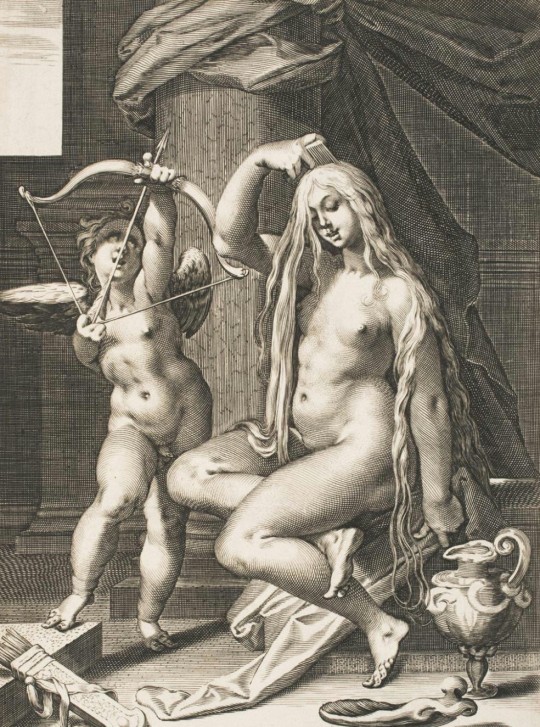
Venus Combing Her Hair by Aegidius Sadeler II (1590-1629)
#aegidius sadeler#art#engraving#fine art#16th century#16th century art#17th century#17th century art#renaissance#renaissance art#northern renaissance#flemish art#flemish artist#mythology#roman mythology#roman goddess#venus#aphrodite#cupid#classic art
2K notes
·
View notes
Photo

Riverscape, Aegidius Sadeler II, n.d., Metropolitan Museum of Art: Drawings and Prints
Harris Brisbane Dick Fund, 1953
Size: sheet: 8 1/4 x 10 7/8 in. (21 x 27.6 cm)
Medium: Engraving
https://www.metmuseum.org/art/collection/search/382735
9 notes
·
View notes
Photo

Aegidius Sadeler II after Albrecht Dürer - Virgin and Child in a Landscape (c. 1597)
16 notes
·
View notes
Photo

Eight Bohemian Landscapes: Landscape with Log Bridge over Cataract, Aegidius Sadeler, c. 1610-1615, Cleveland Museum of Art: Prints
The dramatic forest interior, ornamental foliage, and diminutive figures in this engraving are all hallmarks of the imaginary landscape tradition brought by Flemish immigrants to the northern Netherlands at the turn of the 17th-century. Pieter Stevens (about 1567-after 1624), the designer of the print, worked in Antwerp until 1594, when he was named court painter to Emperor Rudolf II in Prague. While in Rudolf's employ, Aegidius Sadeler engraved a number of his drawings, such as this work. Enormous trees rise above a scene of peasants and mules who cross a manmade bridge to reach a distant mill. In the foreground corner, a group of figures stand along the rocky river bank while a man fires a flintlock across the river.
Medium: engraving
https://clevelandart.org/art/1970.352
3 notes
·
View notes
Photo

Rudolph II, Aegidius Sadeler II (Flemish; ca. 1570–1629) after Hans von Aachen (German; 1552–1615), 1603
Engraving on laid paper
#art#art history#Aegidius Saddler II#Hans von Aachen#german#flemish#german art#flemish art#engraving#laid paper#17th century#17th century art#1600s#1600s art#national gallery of art#national gallery of art washington#nga washington#uploads
48 notes
·
View notes
Text
Can the Past Affect the Future
There is no peculiar merit in ancient things, but there is merit in integrity, and integrity entails the keeping together of the parts of any whole, and if these parts are scattered throughout time, then the maintenance of integrity entails a knowledge, a memory, of ancient things. …. To think, feel or act as though the past is done with, is equivalent to believing that a railway station through which our train has just passed, only existed for as long as our train was in it. (Edward Hyams, Chapter 7, The Gifts of Interpretation)
Did you read this quote and think to yourself, what does this even mean? From my perspective, the passage emphasizes that the idea of believing we are separate from history, almost as if it is a figment of our imagination, is foolish. The past cannot detach itself from the present. Historical events happened regardless of our perception or understanding; however, we can value historical events as essential. “Ancient things” cannot be given any meaning unless one gives it integrity. Interpretation helps us breathe life and meaning into past events and forms values to guide the present (Beck et al., 2019). It is a combination of historical events that have shaped the world we live in today. While we may not understand every detail or connection from the past, we should be oblivious to their occurrence or importance.

A photo by Philip Ball taken from https://physicsworld.com/a/can-the-future-affect-the-past/
I think we tend to forget that history surrounds us daily, and it is something to cherish. We would not be able to understand the natural world without history. Things do not only exist at the moment. They persist throughout time, whether it be physically or emotionally. Living along Lake Ontario, I’m reminded continuously of how these magnificent bodies of water came to be. A long time ago, as the climate warmed from the last ice age, glaciers retreated and melted, leaving what we now referred to as the great lakes. The historical climate changes have given us these diverse ecosystems, such as the great lakes.

A photo taken by me of Lake Ontario
Another reason for historical interpretation is to remember the happy stories of the past while also paying attention to the tragic ones (Beck et al., 2019). Understanding history and its role in the present is what the author of the quote emphasized. It is vital to interpret difficult pasts as it may inspire an individual to become an agent of change (Beck et al., 2019). We can look at the current climate crisis as an example of the importance of environmental, historical interpretation. While throughout history, the climate has always fluctuated, we can reflect upon past behaviours that have led us down the path we are currently on. For example, we can learn from past impacts of deforestation of an old-growth forest. Ideally, an interpreter should education an audience in a manner that may leave them with a passion for changing the future (Beck et al., 2019).

Illustration by Aegidius Sadeler II taken from https://www.artsy.net/artwork/aegidius-sadeler-ii-after-roelandt-savery-three-hunters-and-two-dogs-near-a-pool
Interpreting historical events for educational purposes allows individuals to perceive and connect with past events (Beck et al., 2019). It’s one thing to wander through a forest on your own, admiring the trees and considering how they got there. However, one’s appreciation of the historical significance of a landscape is hugely enhanced by interpretation. Being able to piece together the history behind a landscape allows individuals to develop connections with their understanding and experiences.

What are ways an interpreter can engage an audience while explaining the history of a landscape?
References
Beck, L., Cable, T. T., & Knudson, D. M. (2019). Interpreting cultural and natural heritage: For a better world. Urbana: Sagamore Publishing.
0 notes
Photo

▪Portrait of Pompeia, Wife of Emperor Julius Caesar.
From the series of Roman Emperors and Empresses
Artist: Aegidius Sadeler II, Flemish, c. 1570 - 1629. After Titian (Tiziano Vecellio), Italian (active Venice), first securely documented 1508, died 1576.
Place of origin:Southern Netherlands (modern Belgium)
Date: ca. 1622
Medium: Engraving
11 notes
·
View notes
Photo



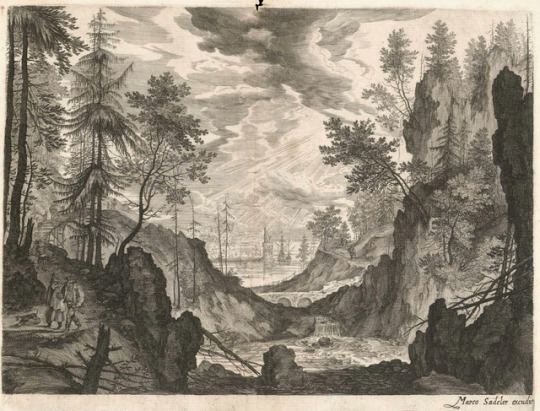
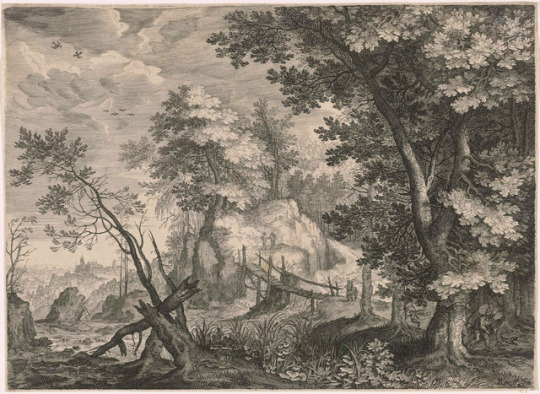


Aegidius Sadeler II - landscape engravings
31 notes
·
View notes
